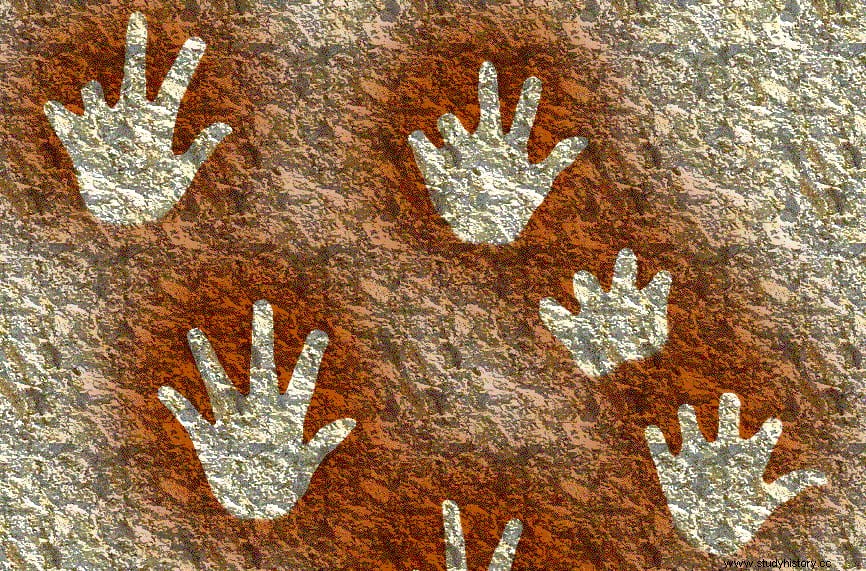Hand prints are a common motif in prehistoric rock art, multiple examples have been found in caves around the world. Now a new study reveals something that had already been pointed out by some researchers a few decades ago:in many caves in France and Spain it is observed that a large number of the hands represented are missing one or more fingers.
The debate has been in the limelight for some time among the experts, who do not end up concluding whether the event could have been deliberate or accidental. Many archaeologists believe that they are deliberate, although the motive is difficult to determine. Others think that it would be nothing more than an artistic resource, that those who painted them simply omitted them for some reason, or painted over the missing parts.
The new study argues that it is actually a ritual practice, a common behavior in many regions until not too long ago. Thus, Upper Paleolithic men would have amputated their own fingers for ritual purposes, such as a religious sacrifice. The reason for reaching that conclusion is the statistics.

For example, in the Gargas Grotto in Aventignan (Hautes-Pyrénées Department, France), whose cave art dates back to about 27,000 years ago, 231 handprints corresponding to about 40–50 people have been recorded. Of these, 114 are missing one or more digits.
In the Cosquer Grotto in Marseille, which we have already discussed here in an article, 28 of the 49 handprints also have fewer digits. And in the Cueva de Maltravieso in Cáceres, whose oldest hand prints date back to 66,700 years ago, the same thing happens, 61 of the 71 hand images lack one or more digits.
It may be likely that a large number of individuals lost one or more fingers by accident, either through frostbite or other causes, but it is still rare for most rock prints to have three or even four missing.
The team of researchers who conducted the study searched global ethnographic databases and found that in 121 relatively recent societies in Africa, Eurasia, Oceania, and the Americas, ritual amputation of fingers was practiced or is practiced even today.
This is done as an expression of pain at the loss of a loved one, as an element indicative of belonging to a group or even as punishment. Also as a form of ritual sacrifice, which is the most likely explanation they believe for the Upper Paleolithic examples, to offer them to gods or supernatural powers.
Some archaeologists, such as Ian Gilligan, from the University of Sydney, told New Scientist that he does not agree with the result of the study. According to him, none of the cited ethnographic cases matches the distinctive pattern seen in Ice Age representations of hands, that is, a sequential shortening of the fifth, fourth and third fingers, with the preserved thumb. This pattern precisely matches the effects of freezing.
Archaeologists from the University of Durham believe that this type of deliberate mutilation would amount to suicide, and indicate that the fingers must be folded or painted in this way as a form of symbolic communication. Others, like Dale Guthrie, of the University of Chicago, believe that it is the hands of children.
The study's authors defend themselves by asserting that they are not claiming that the amputation is actually what happened, but rather that their analysis is just an exploration of one possibility:although the amputation hypothesis is not definitive, we think it is strong enough enough to justify its treatment as if it were correct, for the purposes of further investigation. The study was published in the Journal of Paleolithic Archaeology.
